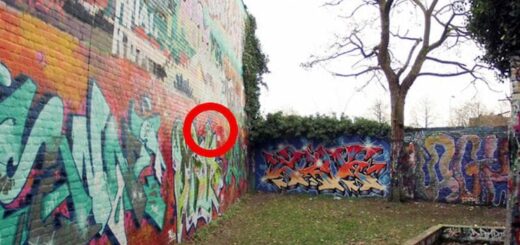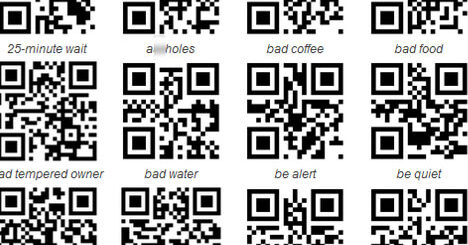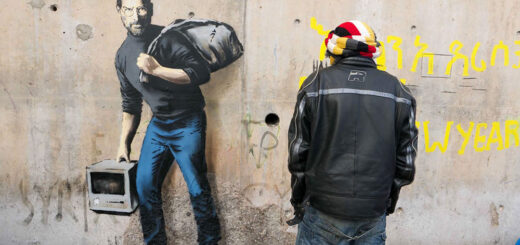Top 5 Graffiti Legends You Need to Know Now
Graffiti art has exploded from the streets into the global art scene, capturing the imagination of art lovers and critics alike. I’ve always been fascinated by the vibrant colors and bold statements splashed across city walls, and I know I’m not alone in my admiration.
The best graffiti artists have the power to transform drab urban environments into mesmerizing masterpieces. Their work isn’t just about tagging; it’s a form of social commentary and personal expression that resonates with people from all walks of life.
In my quest to spotlight these creative geniuses, I’ve scoured the globe to bring you a list of the most influential graffiti artists out there. Their stories are as colorful as their art, and I can’t wait to dive into the dynamic world of street art with you.
The Rise of Graffiti Art
Graffiti art has seen a dramatic transformation over the years, and here are the OG’s of the graffiti Hall of Fame who lived to make these transformations.. It’s more than just spray paint on walls; it’s a vibrant art form full of life, controversy, and meaning. I’ve watched it transition from anonymous tags in hidden alleys to respected galleries and high-end auctions.
Early Days of Graffiti
In its infancy, graffiti was often dismissed as mere vandalism, the handiwork of rebels without a cause. But this perspective has shifted massively. The bravado of street artists risking legal repercussions for the thrill of the act and to make a statement captivated me and many others who saw the potential in this raw expression.
- Underground Scene to Mainstream
- Emergence of Graffiti Icons
- Societal Impact and Acceptance
Those bullet points signify the key stages in graffiti’s ascendancy. Art critics and aficionados now appreciate the nuanced interplay of colors, textures, and messaging that graffiti art exhibits. It’s fascinating to see how every tag, every mural comes with its own backstory, revealing a piece of the artist’s heart and mind.
Recognition and Evolution
Artists like Banksy and Shepard Fairey helped push graffiti into the limelight. Their work isn’t just seen on the streets but is also featured on canvases, in music videos, and on the covers of prestigious magazines. I’ve noticed an exciting rise in collaboration between graffiti artists and major brands, showcasing the growing respect for their creativity and influence.
| Year | Major Event | Impact |
|---|---|---|
| 2000’s | Street Art Books Published | Increased Visibility |
| Late 2000’s | Auction Records Set by Graffiti Art | Recognition of Value |
| 2010’s | Collaborations with Brands | Mainstream Acceptance |
These key events illustrate the growing integration of street art into popular culture. It’s more than just an art form—it’s a movement, one that continuously evolves and adapts, challenging the norms and conventions of the art world. As I delve deeper into the lives of these talented artists, it’s clear the true essence of graffiti is its undeniable power to communicate, provoke, and inspire—forever altering the landscape of urban artistry.
The Impact of Graffiti Art on the Art Scene

The meteoric rise of graffiti has been nothing short of phenomenal, reshaping the boundaries of what constitutes legitimate art. As I’ve witnessed graffiti’s evolution, it’s clear that its ripple effects on the art scene have been both disruptive and invigorating.
Historically, high-art circles regarded graffiti with skepticism, often relegating it to a mere act of vandalism. However, the undeniable skill and social commentary embodied in the work of graffiti artists have forced a reckoning. Street art is now often seen as a mirror to society – reflecting cultural moods, political opinions, and societal issues.
Groundbreaking exhibitions have been pivotal in this transition. Shows like “Art in the Streets” at the Museum of Contemporary Art, Los Angeles, served as a tipping point. They not only celebrated graffiti’s vibrancy but also firmly positioned it within the art historical context. Through such landmark events, graffiti has gained a newfound respect and generated a dialogue about the importance of public art.
| Event | Year | Impact |
|---|---|---|
| “Art in the Streets” Exhibition | 2011 | Accelerated graffiti’s acceptance in the art world |
| Banksy’s “Better Out Than In” | 2013 | Broadened public engagement with street art |
| Jean-Michel Basquiat Auction Sale | 2017 | Set record prices for graffiti-influenced artwork |
Art collectors and enthusiasts have taken notice. Sales of graffiti art are smashing records at auctions, with works by iconic artists like Jean-Michel Basquiat commanding tens of millions. This financial affirmation reflects the solid position graffiti holds in the contemporary art market.
The integration of graffiti into formal art spaces has also encouraged traditional artists to embrace street techniques. This cross-pollination has enhanced creativity, giving rise to a hybrid style that blurs the lines between gallery art and street expressions.
Exploring the Definition of a “Best” Graffiti Artist

When we talk about the “best” in any field, we are often treading on subjective territory. Graffiti art is no exception. Deciding who the best graffiti artist is involves more than just looking at who’s getting top dollar at auctions. It’s about influence, innovation, and the ability to resonate with the public.
In the world of graffiti, the best artist could be the one whose work commands the undivided attention of passersby. Artists like Banksy have achieved this through a combination of sharp social commentary and clandestine mystique. Others, like Shepard Fairey, have created iconic images that have become part of the visual lexicon of our times.
Here is what I’ve found through my research and experiences:
- Innovation: The ability to bring something new to the streets plays a crucial role. Graffiti artists who pioneer techniques or styles tend to leave a lasting impact.
- Skill: This seems obvious, but the best artists exhibit an impressive level of skill. Their lines are crisp, their colors balanced, and their compositions striking.
- Message: The content of their work often speaks louder than the aesthetics. The best graffiti artists are those who convey powerful, relevant messages that evoke strong emotions or provoke thought.
- Influence: The extent to which an artist inspires others is paramount. The best often spark movements that go beyond individual works and ignite broader cultural shifts.
Let’s take a look at some examples that illustrate these traits:
| Artist | Innovation | Skill | Message | Influence |
|---|---|---|---|---|
| Banksy | Unorthodox presentation; anonymity | Precision in stenciling | Political and social commentary | Inspired countless street artists |
| Shepard Fairey | Iconic Obey artwork | Consistent, bold style | Calls to action; advocacy | Wide replication and adaptation |
| Jean-Michel Basquiat | Cross-over from street to gallery | Raw, emotive expression | Social dichotomies; racism | Pivotal in graffiti’s validation |
5 Influential Graffiti Artists from Around the World

When we delve into the realm of influential graffiti artists, the conversation extends beyond sheer skill to include impact on global culture. Banksy, easily the world’s most famous graffiti artist, remains an enigma, yet his satirical street art commands attention and debate. Originating from the UK, Banksy’s works have a distinctive stenciling technique and are found in cities worldwide, often infused with social commentary.
Os Gemeos, a pair of twin brothers from Brazil, have transformed the streets of São Paulo with their vibrant, yellow characters and imaginative scenes that incorporate elements of Brazilian culture. Their influence has led to an increase in colorful public artworks throughout the city, fostering a uniquely Brazilian street art identity.
Across the Atlantic in France, Blek le Rat has been credited with being the father of stencil graffiti. Since the early 1980s, his work has inspired countless artists – including Banksy – and has helped popularize the use of stencils within the graffiti genre. Blek’s art has political undertones and often speaks to the human condition, which resonates with audiences globally.
Shepard Fairey, hailing from the US, rose to fame with his “Obey” sticker campaign and his iconic “Hope” poster for Barack Obama’s 2008 presidential campaign. His work has splashed across walls and galleries alike, characterized by its bold and often countercultural messaging.
Finally, Lady Pink, born in Ecuador and raised in New York, busted onto the graffiti scene in the 1980s. As one of the first women in graffiti, she broke stark gender barriers and has been a lasting influence, inspiring countless female artists to make their mark in what had been a predominantly male arena. Her work incorporates a feminist stance, challenging social norms and reflecting her personal experiences.
These artists have not only mastered their craft but also sparked conversations and pushed the boundaries of what street art can represent. They’ve taken their messages from local neighborhoods to an international stage, solidifying their statuses as some of the most influential figures in the world of graffiti art.
Conclusion: Celebrating the Artistic Genius of Graffiti Artists
Graffiti art has undeniably carved its niche in the art world, challenging perceptions and setting new precedents. The artists I’ve spotlighted have not just painted walls but have also painted new perspectives for critics and enthusiasts alike. Their work transcends traditional canvases, bringing to life stories and dialogues that resonate with a global audience. It’s their innovation, skill, and influence that mark them as true pioneers. As the art form continues to evolve, these artists—and many others—will keep redefining the essence of creativity, one spray can at a time. Their legacy is a testament to the power of graffiti as a dynamic and transformative art movement that continues to leave an indelible mark on culture and society.
Frequently Asked Questions
How has graffiti art impacted the traditional art scene?
Graffiti art has reshaped the boundaries of legitimate art, compelling the high-art world to reassess what constitutes genuine artistic expression. The rise of graffiti has been illustrated by groundbreaking exhibitions and its embrace by art historical narratives.
What financial affirmations have graffiti artists received?
Graffiti artists have seen financial affirmation through record-breaking sales at prestigious auctions, validating the monetary value of street art in the eyes of collectors and the art market.
How have traditional artists responded to the rise of graffiti?
Traditional artists have begun integrating street techniques into their work, resulting in a hybrid style that merges gallery art with street expressions, thereby blurring the conventional lines within the art world.
Who is considered the “best” graffiti artist?
Determining the “best” graffiti artist involves various factors such as innovation, skill, message, and influence. Artists like Banksy, Shepard Fairey, and Jean-Michel Basquiat are often noted for embodying these traits in their impactful work.
Can you name five influential graffiti artists?
Five influential graffiti artists highlighted in the article are Banksy, Os Gemeos, Blek le Rat, Shepard Fairey, and Lady Pink. Each has not only mastered their craft but has also propelled the conversation and expanded the possibilities of street art.



